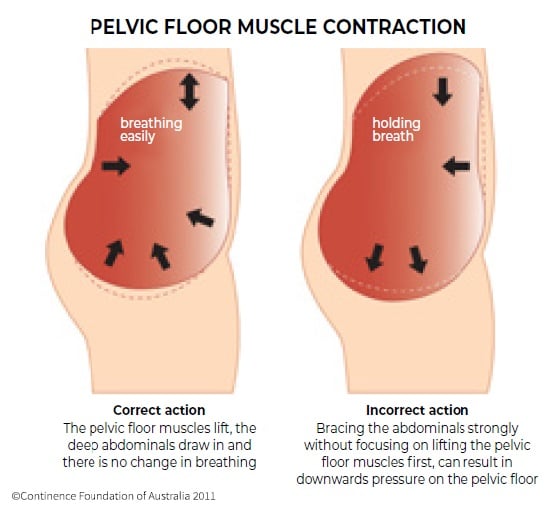, Bridge Magazine , News
Pelvic Floor Muscle Training in men - correct technique
Firstly, think of what it feels like to be busting to go to the toilet and the pressure "down there."
What to do
Then, in standing, sitting, or lying, gently relax the belly and buttock muscles to avoid holding any tension.
Think of gently squeezing the front urinary passage as if stopping the flow of urine, then gently ‘’let go’’.
Next, gently squeeze the back bowel passage as if to stop wind, then gently ‘’let go’’. Lastly, think of drawing the penis in and lifting the testes, then ‘’let go’’. Feel the rise and fall of the muscles as they move. This identifies the three major muscle groups involved in the continence mechanism.
To better see and feel the technique, stand naked in front of a mirror to visualise the testes rising, the penis retracting and the abdominals minimally bracing. “Lifting the nuts to the guts’’ is an easy phrase to remember.

How Many?
Try this 10 times quickly at one per second with all three components being identified. This will help problems such as stress urinary incontinence which needs quick closure of the Pelvic Floor Muscles to avoid leaking when under strain like in coughing, bending, and lifting. Finally, try holding these muscles up for two to three seconds, before gently releasing for two to three seconds. Equal work and rest time is important.
Make sure you continue to breathe throughout the holding time and gradually increase to a 10 second hold, with a 10 second rest. Repeat this 10 times. A set should consist of 10 quick one second squeeze plus 10 seconds hold and rest. Completing three sets per day is recommended and pairing them with tasks you already must do like showering, brushing teeth or on your way to the loo may be a helpful way of remembering them.
What Next?
Armed with this knowledge, it is now important to check in with yourself to identify any concerns with your bowel and bladder control.
- Can you stop the flow of urine?
- Is there any leakage?
- Do you have uncontrolled flatus?
- Do you have any uncontrolled loss of stool?
- Is there any pain performing a pelvic floor muscle exercise?
If the answer to any of these questions is yes, contact your General Practitioner, Pelvic Health Physiotherapist, Nurse Continence Specialist, or the Continence Foundation Helpline on 1800 33 00 66 to seek advice. Lifetime continence health may just be a pelvic floor muscle exercise away!

